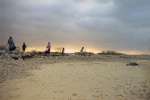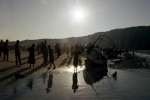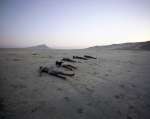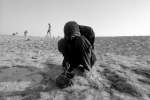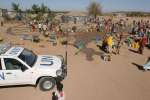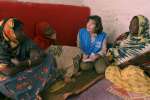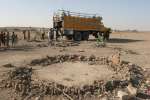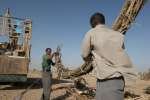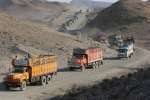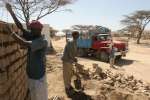Survivors of sea voyage to Malta say seven Somali refugees died
News Stories, 8 May 2012
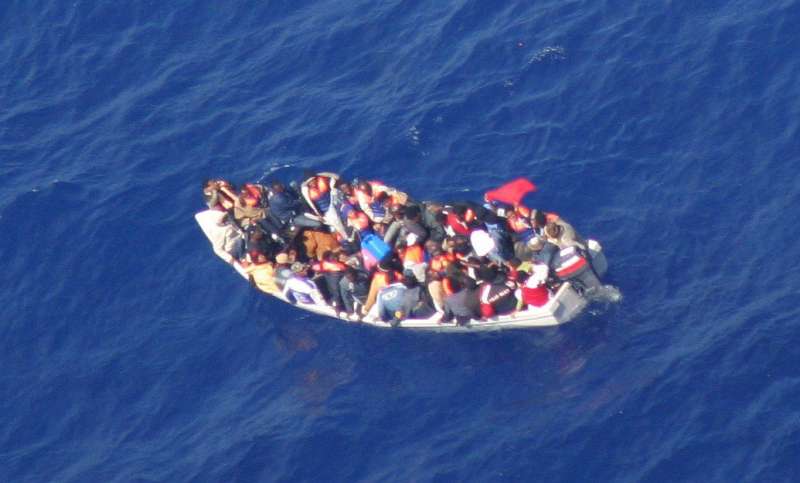
© ANSA
An aerial photo from the past shows an overcrowded boat off the coast of Malta.
VALETTA, Malta, May 8 (UNHCR) – Somali asylum-seekers who landed their boat on one of Malta's most popular beaches at the weekend have told UNHCR that seven fellow passengers died during their week-long voyage from Libya.
The boat came ashore at Riviera Bay on Saturday and the emergency services were alerted to the arrival of the 90 exhausted Somalis by people enjoying an evening on the beach.
This is the fourth such boat to have arrived in Malta this year, bringing a cumulative total of more than 210 people. A further 26 vessels carrying migrants and refugees have arrived in Italy from Libya. "According to our regional office in Italy the latest deaths bring the number of reported or confirmed dead among people attempting to reach Europe from Libya to 81 this year – or two people every three days on average," UNHCR spokesman Adrian Edwards said.
Compared to last year, which saw tens of thousands of people travelling from Tunisia and Libya, numbers of arrivals in Malta and Italy from North Africa are down, with around 1,400 people having arrived in 2012, the majority in Italy.
Last year, an estimated 1,500 people were reported missing or dead attempting to reach Europe across the Mediterranean.
"UNHCR reiterates its call to ship masters in the Mediterranean for heightened vigilance and continued adherence to the longstanding maritime obligation of aiding those in distress," Edwards stressed.
UNHCR advocates fair and efficient procedures for asylum-seekers
Zero-Star "Hotel" that Asylum-Seekers Call Home in Dijon
France is one of the main destinations for asylum-seekers in Europe, with some 55,000 new asylum applications in 2012. As a result of the growing number of applicants, many French cities are facing an acute shortage of accommodation for asylum-seekers.
The government is trying to address the problem and, in February 2013, announced the creation of 4,000 additional places in state-run reception centres for asylum-seekers. But many asylum-seekers are still forced to sleep rough or to occupy empty buildings. One such building, dubbed the "Refugee Hotel" by its transient population, lies on the outskirts of the eastern city of Dijon. It illustrates the critical accommodation situation.
The former meat-packing plant is home to about 100 asylum-seekers, mostly from Chad, Mali and Somalia, but also from Georgia, Kosovo and other Eastern European countries. Most are single men, but there are also two families.
In this dank, rat-infested empty building, the pipes leak and the electricity supply is sporadic. There is only one lavatory, two taps with running water, no bathing facilities and no kitchen. The asylum-seekers sleep in the former cold-storage rooms. The authorities have tried to close the squat several times. These images, taken by British photographer Jason Tanner, show the desperate state of the building and depict the people who call it home.
Zero-Star "Hotel" that Asylum-Seekers Call Home in Dijon
Crossing the Gulf of Aden
Every year thousands of people in the Horn of Africa - mainly Somalis and Ethiopians - leave their homes out of fear or pure despair, in search of safety or a better life. They make their way over dangerous Somali roads to Bossaso in the northern semi-autonomous region of Puntland.
In this lawless area, smuggler networks have free reign and innocent and desperate civilians pay up to US$150 to make the perilous trip across the Gulf of Aden.
Some stay weeks on end in safe houses or temporary homes in Bossaso before they can depart. A sudden call and a departure in the middle of the night, crammed in small unstable boats. At sea, anything can happen to them - they are at the whim of smugglers. Some people get beaten, stabbed, killed and thrown overboard. Others drown before arriving on the beaches of Yemen, which have become the burial ground for hundreds who many of those who died en route.
Crossing the Gulf of Aden
Somalia/Ethiopia
In February 2005, one of the last groups of Somalilander refugees to leave Aisha refugee camp in eastern Ethiopia boarded a UNHCR convoy and headed home to Harrirad in North-west Somalia - the self-declared independent state of Somaliland. Two years ago Harrirad was a tiny, sleepy village with only 67 buildings, but today more than 1,000 people live there, nearly all of whom are former refugees rebuilding their lives.
As the refugees flow back into Somalia, UNHCR plans to close Aisha camp by the middle of the year. The few remaining refugees in Aisha - who come from southern Somalia - will most likely be moved to the last eastern camp, Kebribeyah, already home to more than 10,000 refugees who cannot go home to Mogadishu and other areas in southern Somalia because of continuing lawlessness there. So far refugees have been returning to only two areas of the country - Somaliland and Puntland in the north-east.
Somalia/Ethiopia


Greece: Ramping up refugee reception
UNHCR staff are working with Government authorities, NGOs and volunteers on the beaches of the Greek island of Lesvos to receive cold, wet and fearful asylum seekers making landfall around the clock. They wrap them in thermal blankets and take them to warm, safe emergency accommodation at transit sites, with power and Wi-Fi connectivity.


Return to Somalia
Ali and his family are ready to return to Somalia after living in Dadaab refugee camp for the past five years. We follow their journey from packing up their home in the camp to settling into their new life back in Somalia.


Italy: Mediterranean Rescue
The Italy Navy rescues hundreds of migrants and asylum seekers on the high seas as the numbers of people undertaking the crossing of the Mediterranean from North Africa grows.
 |
|  |
|  |
| 













